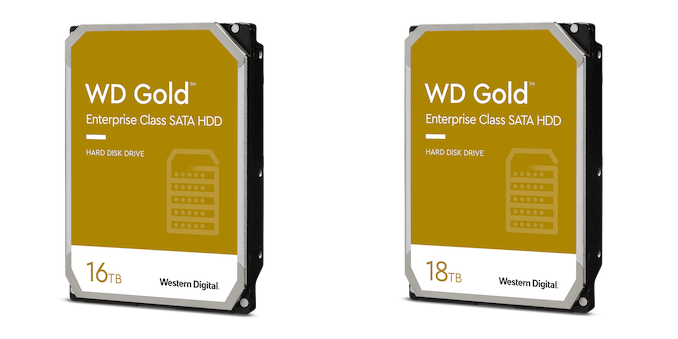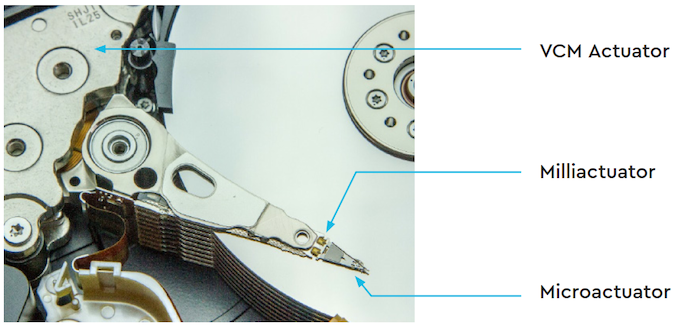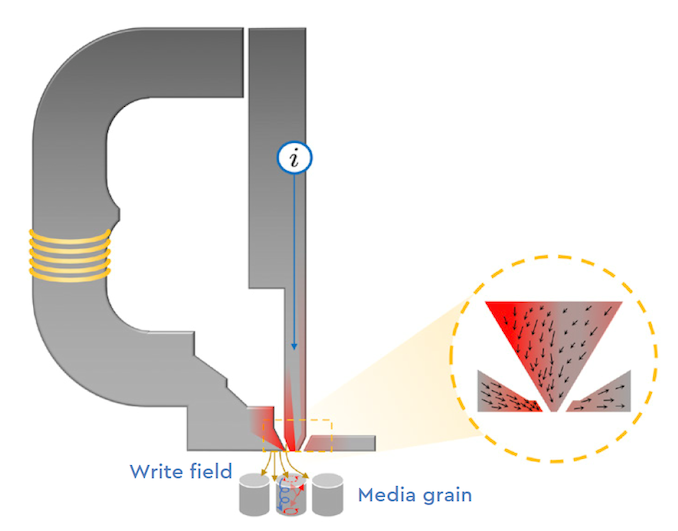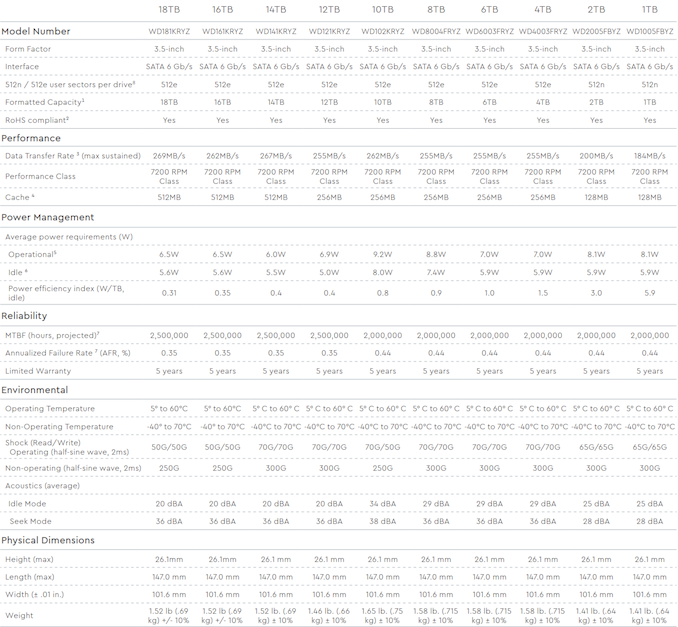Western Digital's 16TB and 18TB Gold Drives: EAMR HDDs Enter the Retail Channel
by Ganesh T S on July 9, 2020 8:00 AM EST- Posted in
- Storage
- HDDs
- NAS
- Western Digital
- MAMR
- Helium HDD
- HAMR
- CMR
- EAMR

Western Digital made a number of announcements yesterday related to their enterprise hard-disk drives (HDD) product lines. While there was nothing unexpected in terms of the products being announced, two aspects stood out - one was the retail availability of EAMR (energy-assisted magnetic recording) HDDs, and the other was additional information on the EAMR technology itself. In 2019, WD had announced the sampling of EAMR-based Ultrastar DC datacenter HDDs with 18TB and 20TB capacities. Yesterday's announcements build upon those products - the WD Gold-branded version of the Ultrastar DC CMR drives is now available for retail purchase, and the Ultrastar drives themselves have moved to general availability. The Ultrastar JBOD and storage server product lines have also been updated to utilize these new high-capacity drives.
Flash-based storage devices have taken over traditional consumer hard-drive application areas. However, increasing data storage requirements mean that HDDs still continue to be the most cost-effective solution for bulk storage. HDD vendors have been working on increasing hard drive capacities using multiple techniques. Around 10 years back, we had 2TB 3.5" HDDs with five PMR (perpendicular magnetic recording) platters in an air-filled enclosure. These drives were CMR (conventional magnetic recording) drives. In the last decade, we have seen advancements in three different categories that have enabled a 10-fold increase in the capacity of HDDs while retaining the same physical footprint:
Increasing the number of platters / making the platters thinner has been made possible by using sealed helium-filled enclosures. The reduced turbulence enables platters to be stacked closer to each other. The first-generation helium HDDs had 7 platters, and this has now grown to 9 platters for the new high-capacity drives.
The size of the writing head and the flexibility with which it can be manipulated dictate the minimum width of the recording tracks on the platters. Western Digital is claiming that they are the first to use a triple-stage actuator (TSA) in shipping HDDs.

The enhanced precision with TSA allows the TPI factor to go up. Incidentally, Seagate also has a novel actuator scheme (dual actuator), though that is aimed at increasing the throughput / IOPS.
One of the key challenges faced in the quest to increase the areal density of platters is the ability of the writing head to reliably alter the magnetic state of the grains in the tracks. Both heat-assisted magnetic recording (HAMR) and microwave-assisted magnetic recording (MAMR) are techniques that address this issue. In 2017, WD seemed set to go all-in on MAMR for their HDD product line, but three years down the road, we are looking at a variant that WD claims is a product of their HAMR and MAMR research - EAMR (energy-assisted magnetic recording).
While details were scant when EAMR was announced , WD is finally opening up on some of the technical aspects.

WD's first-generation EAMR technology (christened as ePMR) involves the application of electrical current to the writing head's main pole (this is in addition to the current sent through the voice coil) during write operations. The additional magnetic field created by this bias current ensures that the bits on the track alter their state in a more deterministic manner. In turn, this allows the bits to be packed closer together and increasing the areal density.
The above techniques can also be used with shingled magnetic recording (SMR) to boost areal density further. SMR has been around in both host-managed and drive-managed versions for a few years now. WD indicated in yesterday's announcement that qualification shipments of their 20TB Ultrastar DC host-managed SMR drive are in progress.

The WD Gold 18TB is available for purchase today and will set you back by $593. The 16TB version is priced at $528, but is currently out of stock. As is typical for enterprise drives, the two new models each have a MTBF of 2.5M hours, workload rating of 550TB/yr, and a 5 year warranty.
Source: Western Digital










69 Comments
View All Comments
Spunjji - Friday, August 28, 2020 - link
I'm pretty sure the answer to this is that it would be almost impossible to guarantee the ability to write to a continuous track of sufficient length across all platters. You'd run a tremendous risk of overwriting data in the middle of a write and/or have wildly fluctuating I/O rates, not to mention that it would dramatically increase controller complexity.I suspect this hasn't happened for much the same reason that SSHDDs died a dismal death: it's cheaper just to solve the speed problem with an SSD.
Kamus - Friday, July 10, 2020 - link
The prices on HDDs haven't followed the previous trends... Yes, we're getting more capacity, but prices are higher.Looking at my amazon order history, I was buying 4 TB HDDs for 139.99 back in 2013. If prices were following the previous trends, we should have 32 TB HDDs at 140 bucks right now. We're very far off from those prices and capacities...
The upside is, SSDs do seem to be on an exponential trend for price perf latley.
voicequal - Saturday, July 11, 2020 - link
The article was informative for me. I had never seen a three stage actuator, which is amazing from a mechanics standpoint. It's interesting to see the world of physics being canvased for any and all tech to increase HDD capacity.Sorry to see the inflammatory comments on this post. Seems like cost & price are being endlessly debated in other articles as well, sometimes over as little as $10/$20. Best to focus on the tech specifications and performance, and leave the price to those who are actually buying & selling these things.
keyserr - Sunday, July 12, 2020 - link
Just checked my previous purchases:WD Red 4TB Oct 2013 £155 £38.75/TB bought
WD Red 4TB Feb 2014 £140 £35/TB bought
WD Red 10TB Mar 2019 £296 £29.60/TB bought (first one was DOA, replacement be fine, 24/7 in a NAS)
WD Red 14TB Jul 2020 £393 £28.07/TB considering. I will maybe hold out for 16/18TB Reds, this news may suggest they could be be out soon.
I just learnt that there is a now two 10TB Reds. 100EFAX VS 101EFAX, internet says the 101 is air filled so runs with slightly more power, heat and noise, but looks to be cheaper.
breynded - Monday, July 13, 2020 - link
"WD's first-generation EAMR technology (christened as ePMR) involves the application of electrical current to the writing head's main pole (this is in addition to the current sent through the voice coil) during write operations. "-- In conventional PMR writing, current is applied to the main pole. In ePMR as shown in the graphic provided, additional current applied to the shields to enhance write performance. The voice coil is used to position the head on the correct track during writing and reading by varying the current applied to it.